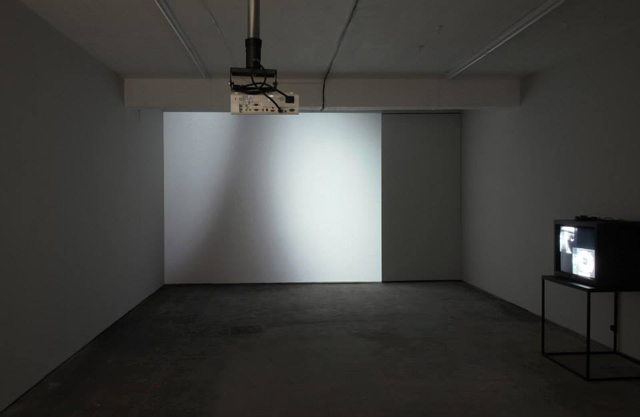For the inaugural show at Seventeen’s new space, gallery associate director and current curator-in-residence at LUX Tim Steer has selected three works that consider the mechanics of perception. Starting with a quote by phenomenologist Merleau-Ponty, Neither seems to be considering the eye as a tool, one that allows us to absorb experience as well as draft the ways in which we see the world “through the traces of a hand”. The works in the show each consider the production of seeing in strikingly distinct terms.
Harun Farocki’s ‘Eye/Machine II’ (2002) is by far the most visually arresting of the three. A rapid-cutting video essay, it discusses and demonstrates the ways that various forms of automated “camera-eye” technologies are deployed in military training and intervention, as well as in the production of consumer goods. Footage of factories, military computer training rooms and camera movements are spliced with an explanation of the ways in which image processing is used in mechanised production processes. Amongst all this is footage from military missile analysis streams – hot white dots moving evasively around the screen, being sensed and targeted by image processing algorithms. We see what the machines see.

Drawing a strange aesthetic comparison, ‘One11 and 103’ shows soft circles of light drift and fade across the wall. It’s an amalgamation of two works – the film ‘One11’, produced by John Cage and directed by fellow composer Henning Lohner, alongside the sound piece ‘103’. Although produced in 1992 (the year of Cage’s death) it’s shot in black and white, emphasising the spots and fades of light and darkness rather than drawing attention to the nuances of colour and the quality of film. At 94-minutes long it’s feature-length, but in typical Cage style it’s conceptual, slow and mesmerizing.
Although Sophie Michael’s ‘99 Clerkenwell Road’ (2010) seems on first glance to be simply an abstract layering of coloured orbs floating in 16mm film-space, on closer inspection the outlines of an interior architecture can be seen – the orbs drift behind corners and at points appear to partially light the walls, revealing parts of coving and ceiling. A quiet study, it communicates subtly, not forcing but leading the eye towards the often less-examined components of a room.
Steer’s overall motivation is unclear – the relatively untroubled and simple works by Cage/Lohner and Michael sit uncomfortably with Farocki’s offering, once we realise the way the “camera-eye” might interpret focussed points of light. Maybe image processing technologies are infiltrating the ways in which we see, the act of viewing becoming weaponized and cold. Maybe these technologies are removing the responsibility of analytical seeing from humans, allowing us to open up to pure aesthetic enjoyment. Maybe it’s neither. **
Neither group exhibition is on at London’s Seventeen Gallery, running from September 4 to October 4, 2014.
Header image: Neither (2014) @ Seventeen exhibition shot. Courtesy the gallery.













